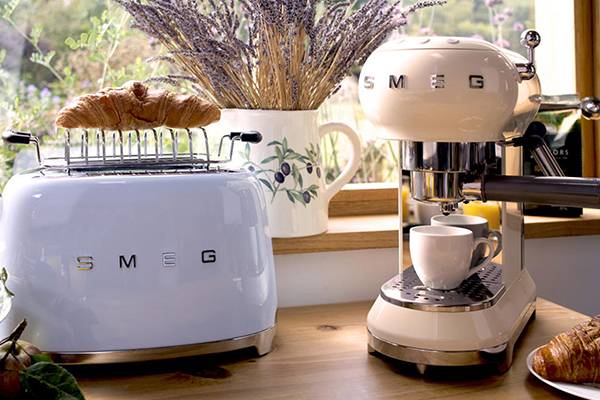
SMEG Customer Case Study
Download this data sheet to explore the features and benefits of Naveo Commerce for Enterprise Grocery.
The eCommerce boom has had a significant impact on the UK supply chain infrastructure, and the logistics infrastructure is now facing a new crisis; a lack of fit for purpose warehousing space to manage supply and demand. Is automation or outsourcing the answer?
The boom in eCommerce has had a significant impact on supply chain infrastructure, and the logistics industry in the UK is now facing a new crisis; a lack of modern and fit for purpose warehousing space to manage supply and demand. Consumers’ demands and expectations have changed exponentially due to efficient, seamless same-day delivery becoming the norm.
To manage this change in consumer behaviour, major retailers are snapping up every inch of square footage available in an attempt to compete with eCommerce giants such as Amazon, and this is largely responsible for the shrinking warehousing landscape.
Companies can respond to this crisis in multiple ways, but the best options for space-strapped retailers are to more effectively use the space they have available or outsource their warehousing operations.
Retailers are under pressure to rethink their warehouse and logistics strategies and reassess whether they are making the best use of the space they have in order to meet the ever-growing demands of online shoppers.
Utilising warehouse space in new and innovative ways will allow them to offer fast, reliable and cost-effective delivery in shrinking time frames to compete with the likes of Amazon; developing a flexible space that will allow them to grow and extend their capabilities. One way this can be achieved is by streamlining warehouse and supply chain processes through the use of technology, such as connected mobile picking devices, voice picking technology and collaborative robots.
Automated technology can provide many benefits to warehouse and fulfilment operations. When introduced into a warehouse, it can ensure the space is used more effectively and that warehouse processes are completed as efficiently and accurately as possible, allowing retailers to keep up with demand.
For example, collaborative robots can allow space to be used that may previously have been redundant, such as vertical space inaccessible to human pickers. The use of connected mobile devices and voice picking technology can also help to minimise mistakes and speed up the picking process.
Many retailers are also choosing to outsource their fulfilment and back-end processes to third-party logistics companies (3PL’s) as this enables them to focus purely on providing a great customer experience in-store and online, without having to be bogged down with complex and time intensive warehouse management processes.
The use of 3PL’s is becoming increasingly common in the eCommerce industry, partly in response to the shrinking warehouse landscape, but also because of the impact they can have on a retailer’s offering. 3PL’s can be far more efficient than in-house warehousing and logistics operations because they are experienced, and can benefit from economies of scale, therefore achieving the same results that a retailer could achieve but at a lower cost. The operations of a 3PL are refined and efficient and, as a result, the customer will likely receive a better fulfilment experience.
In order to consistently deliver excellent customer service, 3PL’s must have the right technology in place to meet the demands of many different retailers as well as keep each different set of solutions, products, suppliers and stock separate.
This requires a reliable Order Management Solution (OMS) that can segregate multiple retailer data sets, yet still enable pickers to work in the most efficient way possible. Scanners and other hand-held mobile devices can be used alongside the OMS to ensure that the right products from the right retailers are being shipped to the right places, and avoid any mix up that could easily be commonplace in an environment dealing with goods from multiple retailers under one roof.
An additional benefit of using connected devices is that the data collected can be fed back to the retailer, meaning that even though logistics operations have been outsourced, the business can still benefit from the analytics and data involved in the process.
Ecommerce retailers must alter their outlook towards warehouse and logistics operations to cope with changes in consumer preference and deal with evolving competition.
The bottom line is that businesses need to ensure their operations are streamlined and reliable in order to meet the ever-evolving expectations of today’s consumer. This can be achieved through the use of automation to improve their existing warehouse operations or outsourcing to a 3PL, but will likely include a combination of both to suit the needs of each business. What is most important is that retailers identify the most appropriate approach for them, as not making a decision could cost them down the line.

Download this data sheet to explore the features and benefits of Naveo Commerce for Enterprise Grocery.

As Naveo Commerce plans its exciting launch of Scan & Go supermarket technology, we look at the key differences between this and self-checkout services already offered in most grocery stores.

As Naveo Commerce plans its exciting launch of Scan & Go supermarket technology, we look at the key differences between this and self-checkout services already offered in most grocery stores.